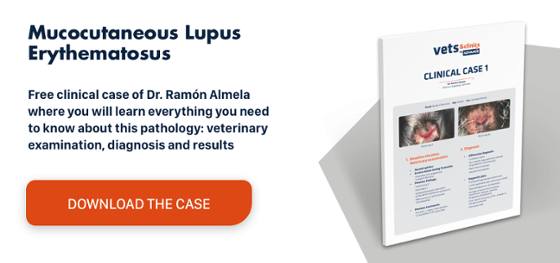Rabies vaccination in dogs: one single protocol or seventeen different ones?
The rabies vaccination for dogs is an essential tool to eradicate human cases of rabies, which is responsible for 59,000 human deaths per year.
Introduction
Rabies is a zoonotic disease that affects the central nervous system and is caused by a linear RNA virus belonging to the genus Lyssavirus of the family Rhabdoviridae. This genus encompasses twelve different species, with classical rabies virus (RABV) the most important in terms of human and animal health.1
Although many mammals can be a host to rabies,2 its main vectors are generally carnivores, often cats and dogs. Other carnivore species or bats can also spread rabies depending on the geographical area. For instance, in Europe, bats and foxes can act as reservoirs of rabies3 and two strains of rabies-associated Lyssavirus have been detected in different species of bats.
The importance of rabies as a zoonotic disease
Rabies is one of the most important zoonotic diseases in both animals and humans given the severity of the resulting clinical picture. It is found worldwide and remains endemic in two out of three countries. Half of the world’s population lives in endemic areas, and each year the disease kills around 59,000 people, mainly children in rural areas of developing countries in Africa and Asia.1
The virus is transmitted in the saliva of infected animals when they bite another animal or person. Indeed, 99% of human cases of rabies are caused by a bite from an infected dog. The incubation period varies over a range that extends from a few weeks to several months. Once the clinical signs manifest, the disease is almost always fatal for both animals and humans.1
In countries where rabies is still a public health problem, dogs are usually the main vector and so the best means of preventing human deaths involves eliminating canine rabies through vaccination programmes. It is estimated that if 70% of the dog population can be vaccinated in endemic countries, it could eradicate canine rabies and, therefore, its transmission to humans.1
In many countries, rabies vaccination is a legal requirement in dogs and usually a prerequisite for international pet travel.4 In endemic regions, dogs should receive the rabies vaccine as an essential tool in prevention.
Rabies vaccination in dogs: current situation in Spain
Thanks to vaccination campaigns carried out in cats and dogs, the disease has been eradicated throughout Spain, which has been free of terrestrial rabies since 1978,5 with the exception of one case of rabies imported from Morocco in June 2013 and another in 2019 in a man bitten by an infected cat while visiting the same country.
Only Ceuta and Melilla sporadically release reports of imported cases of rabies in dogs and horses. However, given the geographical proximity to endemic countries in North Africa (Morocco, Algeria and Tunisia), the occurrence of rabies on Spanish territory cannot be ruled out.
Spain does not have any general legislation in place, except for a law on guard dogs, attack dogs and potentially dangerous breeds. Consequently, each Autonomous Community in Spain is governed by its own regulations that determine the vaccination requirements for animals registered in the community and animals in transit.3 Rabies vaccination is compulsory throughout Spain, apart from in Galicia, Catalonia and the Basque Country where it is voluntary, and in Asturias, where it is only compulsory for potentially dangerous dogs.
The rabies vaccine is considered an essential vaccination to protect both individual animals and the human population. The vaccine is administered as a single dose from 12 weeks old followed by a booster vaccination 12 months later.
Conclusions
Rabies is a zoonotic disease with a worldwide distribution. It is a serious public health concern due to the severity of its clinical picture which is fatal if left untreated. Dogs are the main vector of rabies, so dog vaccination programmes to eradicate rabies in the canine population are an essential tool to help eliminate human cases. In Spain, vaccination is compulsory in all regions (except Galicia, Catalonia and the Basque Country), while it is only compulsory for potentially dangerous dog breeds in Asturias.

